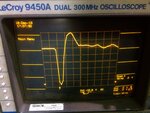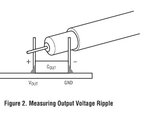eslavko
Junior Member level 2
- Joined
- Jan 22, 2010
- Messages
- 22
- Helped
- 0
- Reputation
- 0
- Reaction score
- 0
- Trophy points
- 1,281
- Location
- Slovenia, EU.
- Activity points
- 1,479
I cant find fast enought one. And to be capable to drive 100mA.
Follow along with the video below to see how to install our site as a web app on your home screen.
Note: This feature may not be available in some browsers.
someone know for (available) digital switch with turn-on time under 1nS to be powered with 5V
Test circuit is with 50 Ohm signal generator impedance. But in your case it is very low input impedance.Bandwidth 100MHz - Probably to low.
You don´t care about delay, you are focussed on rise time.TurnOn/TurnOff 2.5nS/6nS -That's BAD.
According to known device data, this doesn't sound like 74LVC speed is the bottleneck. Should easily achieve < 1ns tr/tf with 4 - 5V supply. Similar thing as the previously report ringing. I presume, the results have more to do with your layout and used measurement tools.I got little under 2nS with 74LVC4066 and little better with74LVC14.
...
I do found MCP1407 driver and tested. Result was clean step with (slow) risetime of 13nS. Unusable for that application. I do check response with 1nF capacitor connected and risetime barely change. So 74AC14 is winner with 2.1nS and bad ringing, and HC14 or BS170 as inverter second with 3.3nS without ringing. So how to go under 1nS? Inverter with discrete components?

